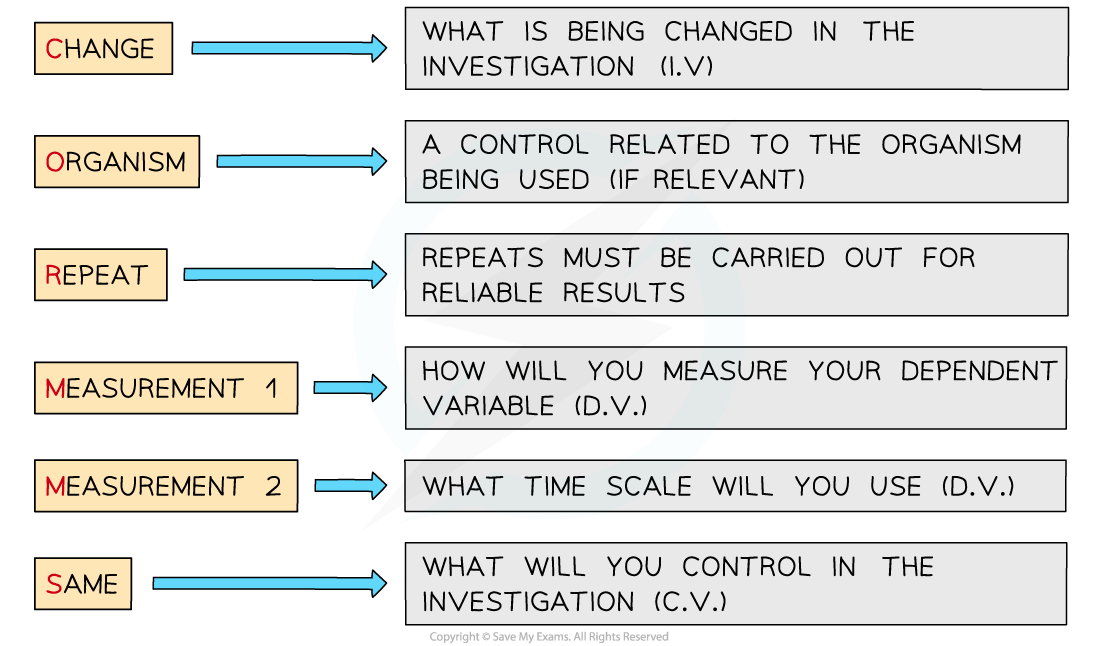Did this video help you?
Factors Affecting the Rate of Water Uptake (Edexcel GCSE Biology: Combined Science)
Revision Note
Did this video help you?
Factors Affecting the Rate of Water Uptake
- There are several environmental conditions that have an impact on the rate of transpiration or water uptake
- Air movement
- Humidity
- Light intensity
- Temperature
- The table below explains how these four factors affect the rate of transpiration when they are all high; the opposite effect would be observed if they were low
Factors Affecting the Rate of Transpiration Table

Investigating the effect of environmental factors on the rate of transpiration
- We can investigate the effect of different environmental conditions (such as temperature, humidity, light intensity and wind movement) on the rate of transpiration using a piece of apparatus called a potometer
- There are 2 types of potometer:
- A mass potometer measures a change in mass of a plant as a measure of the amount of water that has evaporated from the leaves and stem
- A bubble potometer measures the uptake of water by a stem as a measure of the amount of water that is being lost by evaporation consequently pulling water up through the stem to replace it


There are 2 different types of potometer that could be used to investigate the effect of environmental conditions on transpiration
Apparatus
- Potometer (bubble or mass potometer)
- Timer
- Lamp
- Ruler
- Plant
Method
- Cut a shoot underwater
- To prevent air entering the xylem and place in tube
- Set up the apparatus as shown in the diagram and make sure it is airtight, using Vaseline to seal any gaps
- Dry the leaves of the shoot
- Wet leaves will affect the results
- Remove the capillary tube from the beaker of water to allow a single air bubble to form and place the tube back into the water
- Set up a lamp 10 cm from the leaf
- Allow the plant to adapt to the new environment for 5 minutes
- Record the starting location of the air bubble
- Leave for 30 minutes
- Record the end location of the air bubble
- Change the light intensity
- Reset the bubble by opening the tap below the reservoir
- Repeat the experiment
- Calculate the rate of transpiration by dividing the distance the bubble travelled by the time period
- The further the bubble travels in the same time period, the greater the rate of transpiration

Calculating the rate of transpiration using a bubble potometer

Investigating transpiration rates using a potometer
- Other environmental factors can be investigated in the following ways:
- Airflow: Set up a fan or hairdryer to blow air over the plant (this investigation can be extended by putting the fan at different distances from the plant or at different fan-speed settings)
- Humidity: Spray water in a plastic bag and enclose the plant within the bag
- Temperature: Change the temperature of room (e.g. cold room or warm room)
Results
- As light intensity increases, the rate of transpiration increases
- This is shown by the bubble moving a greater distance in the 30 minute time period when the lamp was placed closer to the leaf
- Transpiration rate increases with light intensity because more stomata tend to be open in bright light in order to maximise photosynthesis
- The more stomata that are open, the more water can be lost by evaporation and diffusion through the stomatal pores
Limitations
- The potometer equipment has a leak
- Solution: Ensure that all equipment fits together rightly around the rubber bungs and assemble underwater to help produce a good seal
- The plant cutting has a blockage
- Solution: Cut the stem underwater and assemble equipment underwater to minimise opportunities for air bubbles to enter the xylem
- The potometer has shown no change during the experiment
- Solution: Use the plant cuttings as soon as they have been cut, as transpiration rates may slow down when the cuttings are no longer fresh
Applying CORMS to practical work
- When working with practical investigations, remember to consider your CORMS evaluation

CORMS evaluation
- In this investigation, there are several different variations of the method depending on which environmental factor you are testing. However, if testing the effect of light intensity, your evaluation should look something like this:
- Change - We will change the intensity of the light
- Organisms - The plants used in each repeat should be the same species, size, age, number of leaves
- Repeat - We will repeat the investigation several times to ensure our results are reliable
- Measurement 1 - We will measure the distance travelled by the bubble
- Measurement 2 - ...in 30 minutes (calculate the rate of transpiration)
- Same - We will control the temperature, wind speed and humidity of the environment
Examiner Tip
Remember that calculating the 'rate of transpiration' provides both M1 and M2 in the CORMS evaluation as the rate is calculated based on a distance (M1) and time period (M2)

You've read 0 of your 5 free revision notes this week
Sign up now. It’s free!
Did this page help you?
